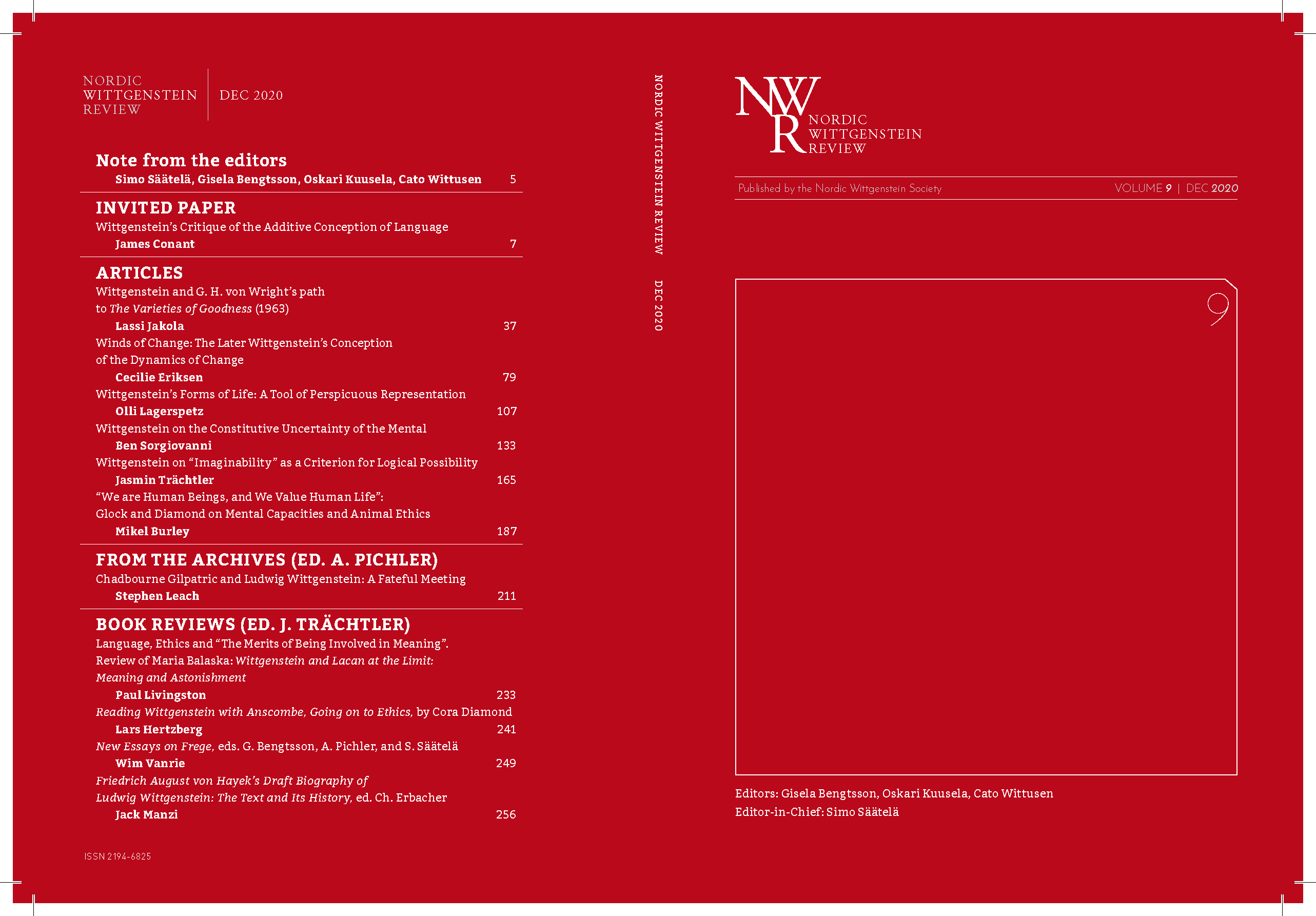Wittgenstein's Forms of Life: A Tool of Perspicuous Representation
DOI:
https://doi.org/10.15845/nwr.v0i0.3560Keywords:
Wittgenstein, Forms of life, Causation, ColourAbstract
The focus is on two texts by Wittgenstein where ‘forms of life’ constitute the pivot of an extended argument: ‘Cause and Effect’ and the discussion of colour concepts in ‘Remarks on the Philosophy of Psychology’. The author argues that forms of life are above all Wittgenstein's response to the question what it is to analyse a concept. The remark that forms of life are ‘given’ and must be ‘accepted’ is a natural corollary of Wittgenstein’s antireductionism and his idea of philosophy as a descriptive enterprise. Wittgenstein is, however, not offering forms of life as the ultimate foundation of our statements about causation or colour. He shifts the focus to the questioning activity itself. Our inquiries and descriptions imply conceptions of how to look and what to accept as verification. Forms of life are given, not because they cannot be analysed further, but because the investigation will take them as given. Comparisons are made, on the one hand, with G.H. von Wright’s interventionist account of the concept of causation and, on the other hand, with the two currently dominant interpretations of ‘forms of life’: the ‘linguistic community’ view and the ‘naturalist’ view.
Downloads
Published
How to Cite
Issue
Section
License
Copyright (c) 2020 Olli Lagerspetz

This work is licensed under a Creative Commons Attribution 4.0 International License.
NWR uses the Creative Commons license CC-BY.
Vol. 1-3 used CC-BY-NC-SA. The collected works copyright ownership for Vol. 1-2 were shared by Nordic Wittgenstein Society and ontos Verlag/De Gruyter.








